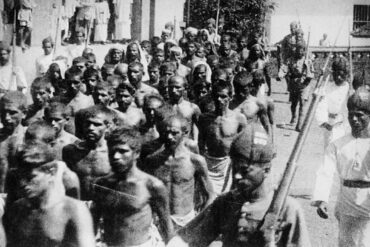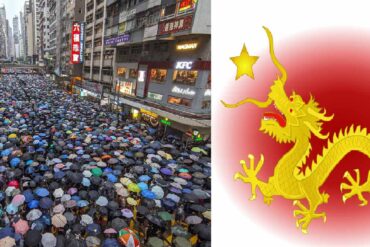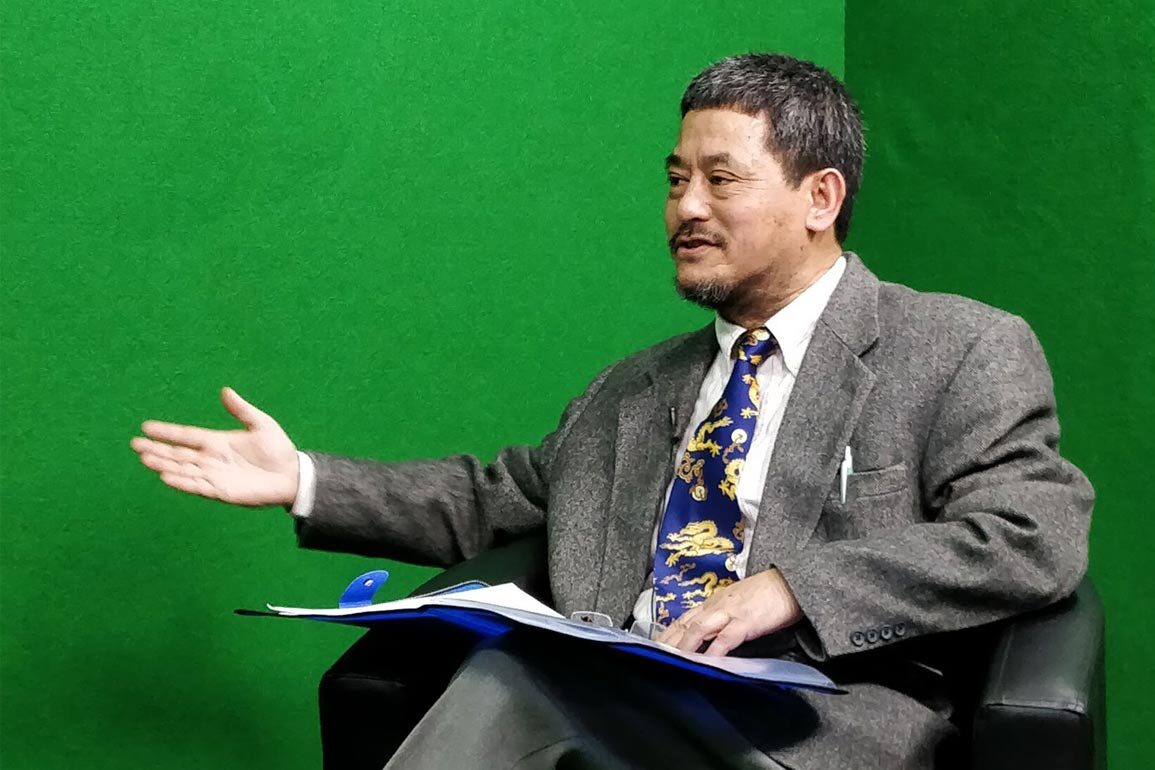It is a moment of reflection for policymakers in New Delhi as bilateral ties with Nepal, one of the closest relationships in the region, hit a historic low. For Professor Mahendra Lama, a member of the India-Nepal Eminent Persons Group (EPG), the economic blockade in September 2015, believed to have been engineered by New Delhi, marked a turning point in bilateral ties, which he says was ably exploited by “external” actors.
A new narrative spread affecting the entire new generation that India was ought to damage Nepal. This was the first sign of fresh anti-Indianism after PM Modi’s visit in 2014. The Nepalese government turned to China, says Professor Lama, who also teaches at the Jawaharlal Nehru University in New Delhi.
On New Delhi’s part, the reluctance to address issues flagged by the Nepalese leadership and their building-up overtime only worsened the situation. We see serious consternations in Nepal and Nepalese civil society and media on the inability of the Government of India to receive the EPG report, he says. The EPG, set-up with “blessings” of Prime Minister Narendra Modi and his Nepalese counterpart, was mandated with drafting a white paper on the future course of India-Nepal ties, to accommodate interests of Kathmandu.
The academic in South and south-east Asian studies believe that New Delhi can very much salvage the ties by “reorienting” its institutions towards serving Nepal’s 30 million people, rather than the leadership. “China stands nowhere in Nepal as compared to India. Nepal’s engagement with India is minute-to-minute, day-to-day, and century-to-century, whereas Nepal’s alignment with China has been historically through Tibet,” he explains.
Professor Lama gave an exclusive interview to The Kochi Post. Edited excerpts.
How did the bilateral ties between India and Nepal recede to this low a point? Is it the new political map of Nepal? Is it due to lack of dialogue after having released our revised map in November last year? Or, is it because of a third party trying to foment trouble, as suggested by our Army Chief?
The present deterioration in India-Nepal relations is definitely not sudden or triggered by one single factor. It was in the making for at least five years. There are structural changes inside Nepal, diplomatic laxities on the part of India, external influences, and also the compulsions of domestic politics.
Even if you draw a straight line all these issues will fit and impinge upon each other. Let’s start from Prime Minister Narendra Modi’s visit to Nepal in August 2014, a historic visit that mesmerised the entire political settings and social constituents in Nepal. I had never seen such a highly impactful visit of any foreign dignitary to Nepal in the last three decades. The next visit of PM Modi during the South Asian Association of Regional Cooperation (SAARC) summit was another widely celebrated event. After that there were several hiccups that remain unaddressed till date.
It started with the earthquake in Nepal in March 2015 and the massive devastation and derailments it caused in the entire politico-economic process. It coincided with the finalisation of the new constitution in Nepal which had been hanging fire since the first election in the post-Maoist movement period in 2008. The domestic situation had turned very fragile.
The passing of the new constitution was an inevitable task. India had certain concerns with regard to the people of Nepal’s Terai region, popularly known as Madheshis. The then Foreign Secretary of India S Jaishankar visited Nepal in September 2015. However, the constitution was passed purportedly without accommodating what India had suggested. Consequently, there was a huge domestic uproar using terms like Indian interference and micro-management by India. Violence erupted in the Terai areas along the India border.
This was followed by an economic blockade by India from September 2015 itself, which caused tremendous hardships to general Nepalese. This blockade led to slow down, and even closing down of many operations as there was a serious shortage of gas, oil, and other essentials.
The India-imposed blockade coincided with the immediate aftermath of the earthquake and also the widely celebrated Vijaya Dashami festival. All said and done, a new narrative spread affecting the entire new generation that India was ought to damage Nepal. This was the first sign of fresh anti-Indianism after PM Modi’s visit in 2014. Nepalese leaders turned towards China for basic supplies and other support both as a humanitarian concern and strategically tactical move. Both anti-Indianism and Nepal’s approaching China are not new. It has happened several times in the past including during the second economic blockade by India in 1989.
However unlike in the past, this time both anti-Indianism and China plank happened when the Communist parties had gained considerable sway over the Nepali polity. For the first time, the constitutionally-provided federal structure was operationalised. In the local, provincial and national elections held during 2016-2017, Prime Minister Khadga Prasad Oli’s Party overwhelmed others, after which it was later joined by Maoist party. India’s traditional partner Nepali Congress literally got vanquished. Nationalism laced with anti-Indianism was the main plank in the election. A few months later in 2018, both the CPN (UML), led by Prime Minister Oli, and CPN (Maoist Centre), led by Prachanda, merged into a single and formidable party now known as Nepal Communist Party (NCP). Historically this is the first consolidated and solid communist conglomerate in Nepal.
The indefinite postponement of SAARC Summit when Nepal continues to remain the Chairperson; China’s new variety of deeper and wider involvement in Nepal including in domestic politics and also including Nepal in the gigantic plan of Belt and Road Initiative (BRI); India’s over-emphasis on Madhesi plank, neglecting other deprived ethnic groups, Dalits and other minorities and New Delhi’s very visible participation in domestic political affairs changed the entire political discourse and diplomatic landscape in Nepal. This was also a victory of sort for anti-India forces, represented by some other countries in Nepal.
People in the Terais, regardless of their place of origin/language/culture are Nepali nationals and have the right to assert and get their rights like the hill and mountain folks. The moment India involves diplomatically in raising only their issues, it creates suspicion among other Nepalese. It only leads to Madhesis getting further alienated from Nepal.
Let Madhesis, janajatis, Dalits, and minorities fight their own battles in their homeland – Nepal.
There has been speculation that PM KP Oli could well be trying to divert attention from differences between himself and Prachanda as he whips sentiment against India. How credible does this sound to you?
There is nothing new in Prime Minster Oli’s attitude and tactics. These are very commonly practiced political tricks from Bangladesh to the Maldives and the United States to Brazil. We have done it in India too, I see even the authoritarian regimes like that in China, Pakistan, and Cambodia resorting to these tricks to eulogise domestic constituency and whip up a variety of nationalistic sentiments. What is noteworthy is the fact that PM Oli is able to do so successfully and effectively for so many months now.
What is most crucial is to revamp and reorient the institutional machinery of India in dealing with the neighboring countries both in the context of dynamics. These countries have undergone drastic changes and also because our machinery and techniques have in many cases outlived their purposes. For instance, Nepal’s assertion and passing of a new map including territories of India were largely avoidable.
The situation could have been prevented had India used its diplomatic instruments much in advance. There are Joint Commissions, there are informal channels and there are civil society constituents who could have been deployed to discuss the issues and prevent it from reaching this fragile and sensitive stage.
There were adequate indications that Nepal was heading towards this and there were equally strong indications that did call upon India not to trigger it further and also for starting conversation and negotiations. But somehow they were not noticed and responded to by the appropriate authority. The way social media played this sensitive event is beyond comprehension and the damage it did in such a short time and space to the relationship so assiduously built is immeasurable. In the end, this has to be brought to the table for discussion, negotiations, and the final solution.
We have recently seen how China has been making inroads into Nepal, culturally, economically, and militarily. Recently, Beijing offered to pay the salaries of Mandarin teachers employed in Nepalese schools. The defence relationship between the two countries has already been picking up. Should this be a matter of concern to India?
Let’s be very clear. There can’t be any comparison between India-Nepal relations and Nepal’s ties with China. It’s a difference of “aakash ani pataal” (sky and earth), “nyano ani chiiisho” (warmth and frigid cold), and “bistrit ani sukshma” ( wide spread and tiny). It’s not a question of what China gives to Nepal, its issues related to spirituality, cultural affinity, traditional belief, geographical bondage, and more seriously sense of belongingness. Except in some materialistic matrices, China stands nowhere in Nepal as compared to India. Nepal’s engagement with India is minute-to-minute, day-to-day, and century-to-century, whereas Nepal’s alignment with China has been historically through Tibet.
How many Nepali nationals go to China and interact in what language? And how many Nepali nationals come to India and interact in what not language – Nepali to Hindi, Bengali to Bhojpuri and Maithili to English.
By buying the propaganda of Nepal’s definite tilt towards China and China’s burgeoning influence in Nepal, we in India are only cutting down our own history, trade, culture, nature, and emotions in our relations with Nepal. We are showing our diplomatic weaknesses and eroding our own institutional memories. There is a huge cost in deliberately pushing Nepal towards China only because we do not like some political parties, some leaders and some decision-makers. We should only go for what 30 million Nepali nationals aspire for. We should address to institutions and not individuals as the latter fade away and go into oblivion in no time.
What Nepal wants is what other countries also want — complete and insurmountable sovereignty and national identity. What India wants is an assurance and unhindered action to safeguard its national security, particularly when there is a historic open border that has served the interest of the two nations so well.
You have been a member of the Eminent Persons’ Group (EPG), the primary objective of which has been to revise the Indo-Nepal Friendship Treaty of 1950. What are your thoughts on the mutual defense provision in the treaty? Is it still very much in place, given the recent incidents involving firing on Indian civilians by Nepalese border police in Bihar or Oli’s pledge to construct defence outposts at the border?
The Eminent Persons Group has been officially set up with the blessings of both the Prime Ministers of India and Nepal. The EPG has prepared a report that would transform and consolidate India-Nepal relations as per the aspirations emerging in the 21st century. It has dealt with all that matter and connects India and Nepal from trade to investment, financial institutions to development agencies, natural resources to pandemics, climate change to natural disasters, health to education, national security to India-Nepal Peace and Friendship Treaty of 1950, open border to borderlands and literature to music and sports. We completed our report well in time in July 2018 after two years of hard work, confabulations, and consultations.
The EPG decided to present the report to the Indian Prime Minister first and immediately after that to the Nepalese Prime Minister. We have not been able to submit the report to the Indian Prime Minister and we are hopeful about presenting the same to him in the near future. We want to present this report to the Heads of the Government and leave it to them to examine and implement the recommendations in the report.
However, we see serious consternations in Nepal and Nepalese civil society and media on the inability of the Government of India to receive this report. Whatever may be the reason, this has become a major festering point often mentioned by the Prime Minister and Foreign Minister of Nepal.
The Gorkha troops, numbering more than 50,000, have been seen as important contributors to India’s border security in the mountain areas. How does one see the people-to-people ties between the two countries when it comes to defence forces?
The presence of Gorkhas from Nepal in the Indian Army is a part of the historical tripartite agreement between Great Britain-India and Nepal. They have immensely contributed along with the Indian Gorkhas for the cause of national security and integration in India. We recognize and respect it and the Gorkhas from Nepal take pride in serving India’s core military outfits. No one should try to disturb and dislocate this connection of valour, sacrifice, and dedication.
Cover Image Source – Twitter (Prof. Lama in conversation with Prof. Happymon Jacob)







